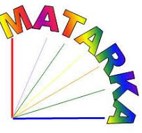Tájváltozás, tájhasználat és az ideális méhlegelő dél-dunántúli méhészek szemével
Absztrakt
Milyen az ideális méhlegelő táj? Milyen ehhez képest a jelenlegi helyzet, hogyan lehetne azt jobbá tenni, és mindez milyen természetvédelmi következményekkel járna? Erről kérdeztünk meg 129 méhészt a 2015-ös Dunántúli Regionális Méhésztalálkozón, Kaposváron. A fő bevételi forrást adó szántóföldi kultúrákon és erdőkön túl a válaszadók többsége kiemelten fontosnak tartotta a vadvirágok sokféleségét fenntartó változatos élőhelyek szerepét a méhcsaládok egészséges önfenntartásához. A méhészek néhány konkrét kezelési javaslatot is megfogalmaztak a méhlegelő értékének javítása érdekében, pl. természetközeli élőhelyek helyreállítását, méhlegelő fajok tudatos vetését és a szántók zöldítését. A javasolt kezelések egy része nemcsak méhészeti, hanem természetvédelmi szempontból is kedvező hatású lehet, mert elősegíti a faji és élőhelyi szintű diverzitást mind a háziméhek, mind a vad beporzó rovarok számára.
Hivatkozások
Bartomeus, I., Ascher, J. S., Wagner D., Danforth, B. N., Colla, S., Kornbluth, S. & Winfree R. (2011): Climate-associated phenological advances in bee pollinators and bee-pollinated plants. – P. Nat. Acad. Sci. 108: 20645–20649. doi: http://dx.doi.org/10.1073/pnas.1115559108
Bretagnolle, V. & Gaba, S. (2015): Weeds for bees? A review. – Agron. Sustain. Dev. 35: 891–909. doi: http://dx.doi.org/10.1007/s13593-015-0302-5
Clough, Y., Ekroos, J., Báldi, A., Batáry, P., Bommarco, R., Gross, N., Holzschuh, A., Hopfenmüller, S., Knop, E., Kuussaari, M., Lindborg, R., Marini, L., Öckinger, E., Potts, S., Poyry, J., Roberts, S., Steffan-Dewenter, I. & Smith H. (2014): Density of insect-pollinated grassland plants decreases with increasing surrounding land-use intensity. – Ecol. Lett. 17: 1168–1177. doi: http://dx.doi.org/10.1111/ele.12325
Czúcz, B., Molnár, Zs., Horváth, F. & Botta-Dukát, Z. (2008): The natural capital index of Hungary. – Acta Bot. Hung. 50(Suppl.): 161–177. doi: http://dx.doi.org/10.1556/ABot.50.2008.Suppl.8
Decourtye, A., Alaux, C., Odoux, J.-F., Henry, M., Vaissière, B. & Le Conte, Y. (2011): Why Enhancement of Floral Resources in Agro-Ecosystems Benefit Honeybees and Beekeepers? – In: Grillo, O. & Venora. G. (eds.): Ecosystems Biodiversity. – InTech, Rijeka, Croatia, pp. 371–389.
Dicks, L., Viana, B., Bommarco, R., Brosi, B., Arizmendi, M., Cunningham, S., Galetto, L., Hill, R., Lopes, A. V., Pires, C., Taki, H. & Potts, S. G. (2016): Ten policies for pollinators. – Science 354: 975–976. doi: http://dx.doi.org/10.1126/science.aai9226
EC – European Commission DG Agriculture and Rural Development (2013): Evaluation of the CAP measures related to apiculture – Final Report. Framework Contract No. 30-CE-0219319/00-20, 170 p.
Kecskés, Cs. & Kulcsár, R. (2002): A méhészet Magyarországon 2000-ben. – Statisztikai Szemle 80: 9.
Kovács, M., Kránizt, L., Madarász, I., Magyari, R., Palakovics, Sz., Pethő, J., Rezneki, R., Szabó, E., Szerletics, Á., Sztahura, E., Tengerdi, G. & Zsemle, V. (2015): Zöldítés. Gazdálkodói kézikönyv. – Nemzeti Agrárgazdasági Kamara, 76 p.
Kovács-Hostyánszki, A., Espíndola, A., Vanbergen, A. J., Settele, J., Kremen, C. &, Dicks, L. V. (2017): Ecological intensification to mitigate impacts of conventional intensive land use on pollinators and pollination. – Ecol. Lett. 20: 673–689. doi: http://dx.doi.org/10.1111/ele.12762
Lehébel-Péron, A., Sidawy, P., Dounias, E. & Schatz, B. (2016): Attuning local and scientific knowledge in the context of global change: The case of heather honey production in southern France. – J. Rural Stud. 44: 132–142. doi: http://dx.doi.org/10.1016/j.jrurstud.2016.01.005
Maderson, S. & Wynne-Jones, S. (2016): Beekeepers’ knowledges and participation in pollinator conservation policy – J. Rural Stud. 45: 88–98. doi: http://dx.doi.org/10.1016/j.jrurstud.2016.02.015
Mihók, B., Kiss, G., Kovács, E., Margóczi, K., Fabók, V. & Kalóczkai Á. (2016): Ki mondja meg, mi a fontos? – Részvétel és természetvédelem. – Természetvédelmi Közlem. 22: 131–154. doi: http://dx.doi.org/10.20332/tvk-jnatconserv.2016.22.131
Molnár, Zs., Kovács-Hostyánszki, A., Sárospataki, M. & Báldi A. (2015): Gondolatok a hazai méhészet és a globális beporzó-felmérés közös céljairól. – Előadás, XVII. Dunántúli Regionális Méhésztalálkozó. Kaposvár és Térsége Méhészeinek Egyesülete és Kaposvári Egyetem, 2015. január 24.
Nagy, P. (2005): Hazánk és az Európai Unió méhészeti ágazatának piaci helyzete és kereskedelme az uniós csatlakozás fényében. – Diplomadolgozat, Budapesti Gazdasági Főiskola Külkereskedelmi Főiskolai Kar, Külgazdasági szak, 88 p.
Pinke, Gy. & Pál, R. (2009): Floristic composition and conservation value of the stubble-field weed community, dominated by Stachys annua in western Hungary. – Biologia 64: 279–291. doi: http://dx.doi.org/10.2478/s11756-009-0035-5
Potts, S. G., Imperatriz-Fonseca, V. L. & Ngo, H. T. (Eds.) (2016a): The assessment report of the Intergovernmental Science-Policy Platform on Biodiversity and Ecosystem Services on pollinators, pollination and food production. – Secretariat of the Intergovernmental Science-Policy Platform on Biodiversity and Ecosystem Services, Bonn, Germany, 827 p.
Potts, S. G., Imperatriz-Fonseca, V., Ngo, H. T., Aizen, M. A., Biesmeijer, J. C., Breeze, T. D., Dicks, L. V., Garibaldi, L. A., Hill, R., Settele, J. & Vanbergen, A. J. (2016b): Safeguarding pollinators and their values to human well-being. – Nature 540: 220–229. doi: http://dx.doi.org/10.1038/nature20588
Requier, F., Odoux, J. F., Tamic, T., Moreau, N., Henry, M., Decourtye, A. & Bretagnolle, V. (2015): Honey bee diet in intensive farmland habitats reveals an unexpectedly high ower richness and a major role of weeds. – Ecol. Appl. 25: 881–890. doi: http://dx.doi.org/10.1890/14-1011.1
Stoate, C., Báldi, A., Beja, P., Boatman, N. D., Herzon, I., van Doorn, A., de Snoo, G. R., Rakosy, L. & Ramwell, C. (2009): Ecological impacts of early 21st century agricultural change in Europe – a review. – J. Environ. Manage. 91: 22–46. doi: http://doi.org/10.1016/j.jenvman.2009.07.005
Tóth, P. (2012): Magyar Méhészeti Nemzeti Program Környezetterhelési Monitoring vizsgálat 2011–2012. – Országos Magyar Méhészeti Egyesület, Veszprém, 48 p.
Vandenberg, A. J. & the Insect Pollinators Initiative (2013): Threats to an ecosystem service: pressures on pollinators. – Front. Ecol. Environ. 11: 251–259. doi: http://dx.doi.org/10.1890/120126
Vítková, M., Müllerová, J., Sádlo, J., Pergl, J. & Pyšek, P. (2017): Black locust (Robinia pseudoacacia) beloved and despised: A story of an invasive tree in Central Europe. – Forest Ecol. Manag. 384: 287–302. doi: http://doi.org/10.1016/j.foreco.2016.10.057
Zilahy E. (szerk.) (2012): A méhészet, méztermelés helyzete és lehetőségei, különös tekintettel Észak-Magyarország megyéire. – Központi Statisztikai Hivatal, Budapest, 15 p.






